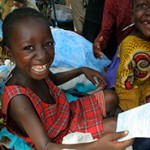Social and New Media Offers Opportunities but Concerns Remain
Last week during Social Media Week, USAID held a session to show how social and new media are being used in the world of international development. Participating in Social Media Week for the first time, USAID noted it didn’t even have a Facebook or Twitter account in 2010 when a massive earthquake struck Haiti.
Now with more than 200,000 Twitter followers and about 15,000 fans on Facebook, USAID said it is using social media in new and innovative ways to share information across the globe as well as promote social change. And while access remains a big issue in parts of the developing world, Joshua Haynes, USAID’s Senior Development Technologist noted that in areas like South Sudan, where smart phone penetration is in the single digits, SMS (text messaging) and community radio can be used to bring about change.
In the world of social and new media, change happens fast. While smart phones may not be widely available now in some emerging markets, feature phones (one grade below a smart phone) are more affordable and can be used to access the internet, as well as receive text messages. Development organizations are using these new channels to help get out the vote in areas like Somalia, Nigeria and Afghanistan. They are also being used to deliver vital health messages.
For example, the Mobile Alliance for Maternal Action (MAMA) project produced a video for last week’s session featuring a young mother in Dhaka, Bangladesh, who received messages such as how long to breastfeed her baby and when to go to the clinic for immunizations. Because much of this particular MAMA campaign’s target population is illiterate, many messages were delivered via voice, not text.
In addition to access, there are other barriers and concerns to consider. While cell phones are especially beneficial to women in developing countries – because they say they help them feel more independent, safer and more educated – a large majority of married women (74%) said they did not want a mobile phone because their husbands won’t allow it.* To address this issue USAID has partnered with GSMA’s mWomen program, whose goal it is to increase women’s access to and use of mobile and life-enhancing, value-added services in the developing world.
Other questions raised included what do you do about governments that use social media to control or manipulate information? Also, how do you measure the success of these programs? But opportunities abound such as open data initiatives popping up in the developing world that allow the public open access to raw and aggregate data.
USAID’s new partnership with Sweden, the UK Department for International Development (DFID) and Omidyar Network (ON) called Making All Voices Count: A Grand Challenge for Development has set up a $45-million fund to support innovative solutions and harness new technologies to spark a global movement for open government, transparency and accountability.
*GSMA mWomen. March 2012. Striving and Surviving: Exploring the Lives of Women at the Base of the Pyramid.






Leave a Reply
Want to join the discussion?Feel free to contribute!